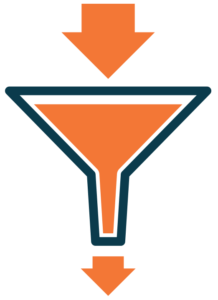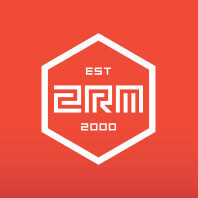If you’re a present-day marketer, you’ve probably become familiar with the term “marketing automation.” Maybe you’ve just heard about it. You may have done a little research on the topic. Perhaps you’ve even started using it in your marketing efforts.
There are a variety of infographics and case studies out there telling us that marketing automation works and the investment is worth it, but implementing a successful automated campaign is not an easy feat, and it certainly doesn’t happen “automatically” (pun intended).
Marketing automation on its own is good, but it’s kind of like having a car with no GPS. You may know where you want to end up, but there’s a slim chance you’ll get lucky enough to arrive there without a road map and a little guidance. Enter inbound marketing.
Before we dive into some of the key components needed for implementation of an automated campaign with an inbound approach, let’s clearly define what each term means:
Marketing automation refers to software platforms (such as HubSpot, Salesforce Pardot, Marketo, etc.) that can automate repetitive marketing activities such as emails, lead scoring, and internal notifications to help nurture leads that already exist within an organization. Automating these activities maximizes productivity by decreasing the amount of time spent on them by marketers.
So, think about your sales funnel — it’s full of leads collected over time and likely housed in your CRM. Using marketing automation, you can easily guide those leads through the funnel, without the need for any manual work, until they eventually become sales qualified and are ready to talk to a sales team member or even make a purchase.
But as you sift through these existing leads and narrow your lists, you’ll eventually need a way to feed new quality leads into that funnel. This is where inbound marketing comes in.

Inbound marketing is the process of attracting visitors to websites/landing pages and converting them to become more qualified or even NEW leads.
In addition to pushing your message out to a targeted list of existing leads, you’re expanding your reach by putting content in front of a
targeted audience that’s relevant to them no matter where they fall in the buyer’s journey. This draws them to you, generating new quality leads that are highly interested in what you have to offer and therefore more likely to become a customer.
Inbound marketing can also help get your message back in front of existing leads who may have made it all the way through, say an automated email campaign, with little to no engagement, and help reach them in areas outside of their inbox to continue the nurturing process.

Marketing automation doesn’t happen automatically
A significant amount of time is required up-front in order to effectively execute the necessary planning, strategizing, and collaboration needed prior to hitting “go.” That being said, once an automated campaign goes live, it should run almost completely on its own, doing the heavy lifting of nurturing and sifting through leads so that the sales team can focus only on the most qualified.
So let’s talk about 6 key components that go into all of that upfront planning:
Marketing and sales team collaboration
Before any planning can begin, it’s essential to coordinate a kickoff meeting between the sales and marketing teams to clearly identify roles and expectations, because successfully hitting your campaign goals requires a true team effort from both sides. The sales team should identify what the ideal lead looks like from their perspective so that the marketing team can build the campaign to generate the leads best suited for them. Then, goals should be set around how many sales-qualified leads the marketing team is expected to provide that the sales team will follow up on and (hopefully) convert into customers.
Content strategy
Content strategy is undoubtedly one of the most important pieces of an automated campaign. New and existing content should be bucketed into each of the 4 phases of the buyer’s journey (awareness, consideration, decision, and delight) so that no matter which phase a visitor or lead is in, there is content out there that is timely and relevant to them.
Lead scoring
Lead scoring is used to track each lead down the sales funnel — the higher the score, the more qualified they are. Typically, a threshold is set that says, “If a lead hits a score of say, 100 for example, they are considered sales qualified and ready to be passed off to the sales team.” These scores can accumulate a few different ways:
- Based on information already existing in your CRM
- New info gathered through campaign form submissions
- Campaign engagement such as content downloads, email clicks, page views, form submissions, etc.
Asset and workflow development
Campaign email and landing page templates should be designed to only allow for one CTA. Ideally, no other links or navigation should be included to avoid any potential distractions from the primary action we want the end users to take. Your automated workflows should be well thought out and tested prior to going live as they can get very complex, very quickly, leaving a lot of room for error.
Campaign amplification
Targeted paid and social media, and website promos are all key pieces of inbound marketing. They work to draw your target audience to your campaign landing pages where you can collect more information in exchange for relevant content.
Ongoing campaign optimization
Once all of the upfront work is done and the campaign is live, the automation kicks in and can pretty much run on its own. However, it’s important to periodically check in on the campaign to ensure things are running smoothly and you’re on pace to hit your goals.
Though the upfront investment in time and budget can seem intimidating, it’s really important to remember you’re investing in an ongoing effort. Changes can always be made to further optimize and keep your campaign up to date, but the emails, landing pages, workflows, forms, and content developed up-front have the ability to run as long as you want them to. The longer the campaign is live, the more lead nurturing and generating it can do.
Marketing automation doesn’t happen automatically, but if you keep these 6 key components in mind you’ll be well on your way to automated success.


 By Two Rivers Marketing
By Two Rivers Marketing By Patrick McGill
By Patrick McGill